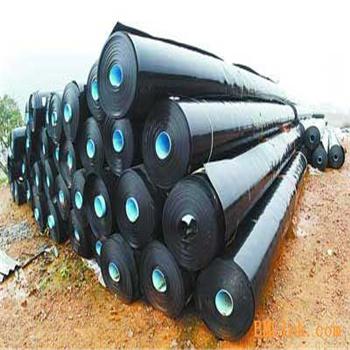



Waterproof board is a type of anti-seepage material made of polymer as the basic raw material, which can prevent liquid leakage and gas volatilization. Traditionally, geotextile membranes with a thickness of ≥ 0.8mm are called waterproof boards; 0.8mm geotextile membrane is a type of anti-seepage material made of polymer as the basic raw material, which is divided into homogeneous waterproof board and composite waterproof board. It is widely used in construction, transportation, subway, tunnel and engineering construction

When constructing waterproof boards, attention should be paid to the following points:
1. It depends on the design contract and construction quotation method. Generally, it is calculated based on area. Attention point: If there is a slope, it should be multiplied by the slope coefficient
2 Construction specifications, whether the overlap of waterproof boards is qualified, and if not designed according to specifications, the corresponding amount of work should be reduced, and if necessary, rework should be carried out3 According to design specifications, when looking at local joints (if mechanically fixed), it is necessary to consider the treatment of rivets (bolts) and calculate the joints based on the number of joints4 The sum of local constructions. According to your personal relationship and engineering quality, a measurement area of twice can be appropriately given, such as gutter, anti elevation treatment, and edge treatment, because the anti wrapping part itself is made of two layers
Secondly, the protection of the waterproof layer
After the construction of the waterproof layer is completed, it must be strictly protected, otherwise it is very easy to be damaged, leading to a decrease in waterproof quality or even complete failure, so it must be taken seriously
① Any materials, tools, and materials should be stacked as far away from the already laid area as possible during laying. Shoes with nails should not be worn to walk on the waterproof layer. Education on the protection awareness of the waterproof layer should be strengthened for on-site construction personnel, and damage is strictly prohibited.
② When carrying out other operations without a protective layer (such as arches or side walls), the waterproof layer should not be damaged. When welding steel bars, the waterproof board should be covered with flame-retardant materials to avoid welding sparks from damaging the waterproof board.
③ The support of the head guard must be equipped with a rubber cushion layer at the point where it comes into contact with the plastic waterproof board.
④ When using reinforced concrete lining, it is necessary to protect the head of the steel bars to avoid damaging the waterproof board
⑤ When binding steel bars, installing templates, and lining the trolley in place, wrap geotextile around the cushion block of the steel bar protection layer to prevent collision and scratching of the plastic plate.
⑥ When pouring the secondary lining concrete, the damage to the waterproof layer caused by the vibrating rod is not easy to detect. Therefore, special attention should be paid to the construction of the secondary lining mold pouring concrete, and the waterproof layer should not be damaged. During pouring, a dedicated person should be observed, and any damage should be repaired immediately
⑦ When pouring secondary lining concrete, protective boards should be set up at the outlet of the concrete delivery pump to prevent direct impact of the concrete on the waterproof board.
⑧ When pouring concrete for secondary lining, avoid letting the compactor come into contact with the waterproof board; When the insertion type vibrating rod needs to change its position in the concrete, it should be slowly pulled out vertically and not dragged horizontally in the concrete pouring bin
⑨ The spacing between the pipes buried in the secondary lining and the waterproof board should not be less than 5cm to prevent damage to the plastic waterproof board